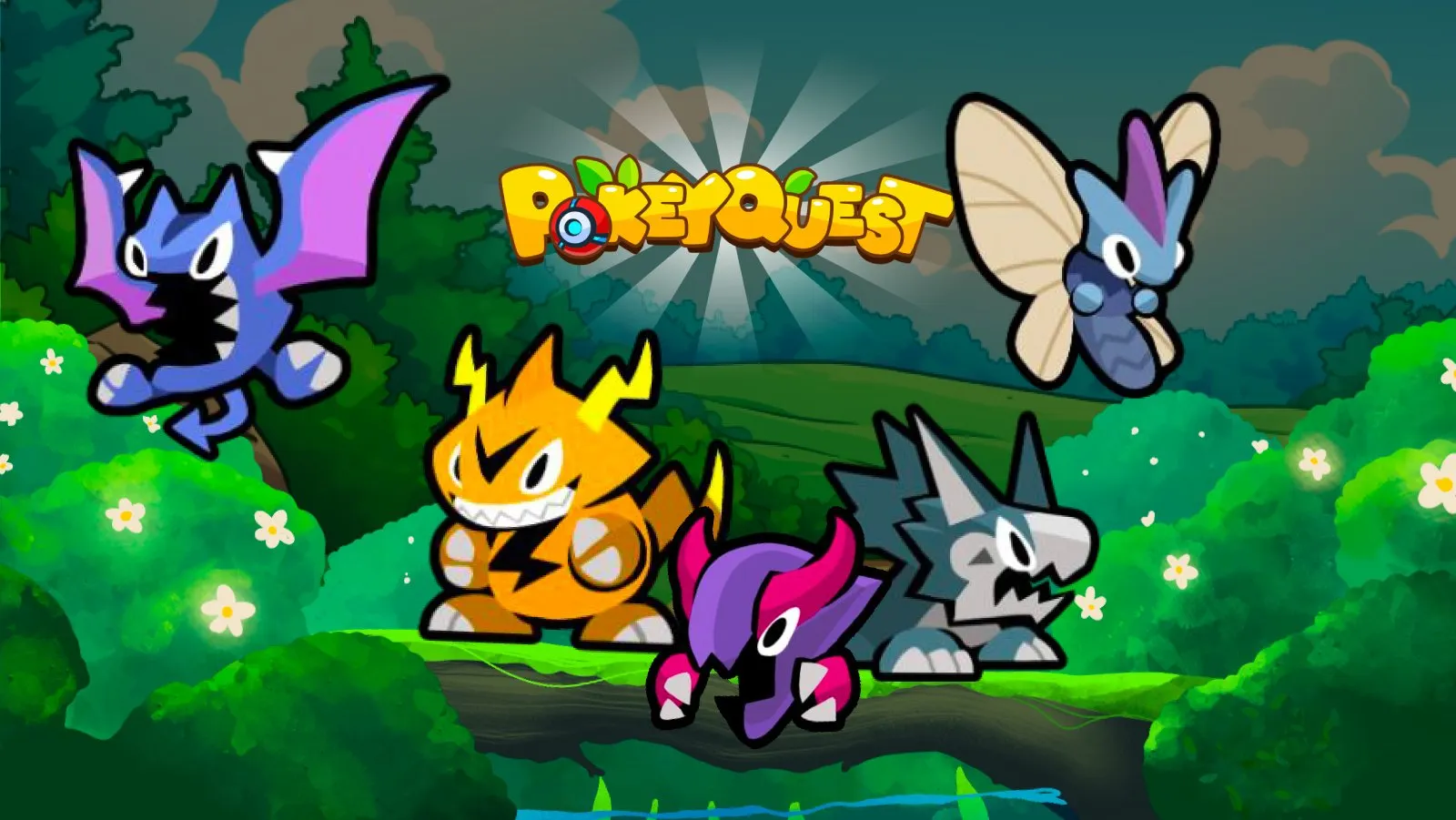For the most part, the current crop of popular Telegram games such as Hamster Kombat and X Empire don’t look particularly appealing—from a visual standpoint, at least. From very basic menus to what appears to be AI-driven artwork and a complete lack of engaging effects, the absence of any real visual stimulation has been one of my main complaints of the budding genre.
But PokeyQuest, a Telegram tap-to-earn game that appears to have around half a million players so far, fixes that issue by… let's say, borrowing some visual ideas from Pokémon, and as a result is instantly more visually appealing than almost every other Telegram game out there.
In its current state, PokeyQuest is one of the more basic tap-to-earn games out there, as you simply tap on the screen to earn coins. There simply isn’t that much more to it.
However, you are tapping on your trainer who, for me at least, looks very much like May from the “Gen3” Pokémon games (Ruby, Sapphire, and Diamond), and their animal companion called ZapZap that looks like a knockoff Pikachu toy you might find on Temu.

Every few taps, the "Temu Pikachu" will attack a punching bag that’s also in the scene while your trainer barks orders at it. Amazingly, this is somehow the best animation I’ve seen in any of these Telegram games. It’s just enough for you to be visually stimulated, and makes you feel like you are actually doing something other than making numbers go up.
As you tap, you’ll eventually be given random Pokey Cards, which unsurprisingly bear a strong resemblance to Pokémon cards. They feature different creatures that will give you passive income, meaning the more you collect, the more coins you earn. If you get multiples of the same card, then you can upgrade them to earn even more, which is basically the only other thing to do than tap. But when these cards arrive, they too have a basic animation, which is more than most of these games can say.
The creatures on these cards are also obviously Pokémon stand-ins, with a few small differences. In my collection, I have a ClawDash (very clearly a Sandslash copy), LeafShell who looks like Turtwig, and ShadowPup who I think is Poochyena.
One I haven’t unlocked yet is called Wingull, which is just straight-up the name of a real Pokémon creature, though I can’t say yet whether PokeyQuest’s interpretation uses the same artwork too.
It’s a shame that the most visually appealing Telegram game has effectively stolen the IP of the Nintendo mega-franchise to make it work. Obviously, the familiarity of the characters is one reason it's appealing, but the little extra effort given to slick and responsive animations gives PokeyQuest an appeal that many other Telegram games lack. Even with original art, that would likely still be the case.

Considering it’s still relatively small in the world of Telegram games—a space that still isn’t particularly well known outside the Web3 space anyway, despite the towering user tallies—I’d wager that the legal department of the Nintendo co-owned Pokémon Company likely hasn’t seen PokeyQuest yet.
But as soon as they do, there’s likely a cease-and-desist on the way to the developers, as this is about as blatant IP infringement as you can get. And if the token they mention in game ever materializes, then that will almost certainly be the case given you can’t go monetizing someone else's IP.
Considering the chances of PokeyQuest ever offering any kind of airdrop are slim without a legal fight from team Pokémon, this might be one game to avoid. But for all the Telegram game developers who I know are reading this, please have a look at how big of a difference that lively, animated visuals can have on supercharging a simple game like this.
Clicking on a JPEG is incredibly boring, regardless of whether it’s a hamster, a coin, or some weird cartoon Elon Musk-a-like. But games like the O.G. Cookie Clicker and PokeyQuest make it slightly more appealing with basic visual feedback, and it makes them feel 10 times more fun in the process. It’s a lesson that even slightly more original Telegram tappers should take to heart.
Edited by Andrew Hayward





